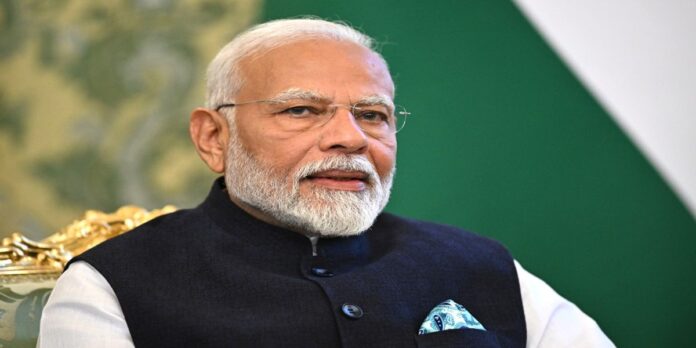India is set to dominate the global economic landscape, maintaining its status as the fastest-growing large economy for the next two fiscal years. The January 2025 edition of the World Bank’s Global Economic Prospects (GEP) report projects India’s economy to grow at a steady rate of 6.7% in both FY26 and FY27, significantly outpacing global and regional peers.
At a time when global growth is expected to remain at 2.7 per cent in 2025-26, this remarkable performance underscores India’s resilience and its growing significance in shaping the world’s economic trajectory.
The GEP report, published twice a year in January and June, is a flagship publication of the World Bank Group that examines trends and projections in the global economy. It places a special emphasis on emerging markets and developing economies, offering insights into their growth trajectories and challenges. It serves as a vital resource for policymakers, economists, and researchers.
The report credits this extraordinary momentum to a thriving services sector and a revitalised manufacturing base, driven by transformative government initiatives. From modernising infrastructure to simplifying taxes, these measures are fuelling domestic growth and positioning India as a cornerstone of global economic stability. With its closest competitor, China, decelerating to 4 per cent growth next year, India’s rise is more than just a statistic. It is a powerful story of ambition, innovation, and unmatched potential.
Complementing the World Bank report, the latest update from the International Monetary Fund’s (IMF) World Economic Outlook (WEO) also reinforces India’s strong economic trajectory. The IMF forecasts India’s growth to remain robust at 6.5% for both 2025 and 2026, aligning with earlier projections from October.
The continued strength of India’s economic performance, as projected by both the World Bank and IMF, underscores the country’s resilience and highlights the sustained strength of its economic fundamentals, making India a crucial player in the global economic landscape.
The latest GEP report marks a significant milestone by offering the first comprehensive review of the performance of developing economies since the beginning of the 21st century. With 2025 signalling the end of its first quarter, the report assesses the progress made by these economies since 2000 and evaluates their future prospects over the next 25 years.
The Government of India (GoI) has implemented a series of visionary schemes and initiatives aimed at propelling the nation towards sustained economic growth and global leadership. From infrastructure development under the PM GatiShakti National Master Plan to fostering innovation through initiatives like Startup India and the Production Linked Incentive Scheme, these reforms are transforming sectors such as manufacturing, digital economy, and financial inclusion. Collectively, they reflect India’s commitment to building a resilient, self-reliant, and globally competitive economy.
As the fastest-growing large economy, with steady growth projected at 6.7% over the next two fiscal years, India continues to outpace global peers and cement its position as a leader in economic resilience and progress.
From the Goods and Services Tax (GST) unifying the market to initiatives like Startup India and the Production Linked Incentive Scheme bolstering entrepreneurship and manufacturing, the nation is building a dynamic and robust economy. With this momentum, India is set to shape the future of the global economy, exemplifying the power of ambition, resilience, and strategic governance in achieving unparalleled progress.





